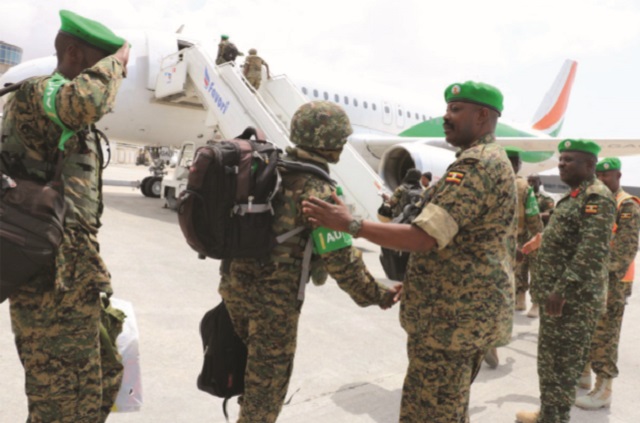
As young people, we need to avoid being duped into forgetting or ignoring our history and say never again to chaos
Kampala, Uganda | NATASHA MARIAM | On February 6 Ugandans joined the UPDF to celebrate Tarehe-Sita, a day which marks the attack on Kabamba barracks by 27 armed and a few unarmed patriots. They stormed the barracks marking the start of the struggle by the Ugandans against the misrule that they had witnessed characterised by dictatorship, unconstitutional governance, and state oppression and violation of human rights.
This liberation struggle started in 1981 to January 26, 1986 when Uganda was finally liberated, after taking over Kampala. Tarehe-sita which literary means the sixth day is always celebrated with a long week of activities in different districts around Uganda and this year’s celebrations started on January 31 and ended on February 6 in the Acholi sub region; particularly in the districts of Agago, Lamwo, Gulu, Omoro, Pader, Nwoya ,Amuru and finally Kitgum to crown the week. A number of activities including community cleaning and health drives among others were conducted by UPDF medical and engineering teams. The most significant activities occurred in the hosting districts.
Unlike the post-independence governments and their armed forces that were characterised by extra-judicial killings, impunity, indiscipline, torture of the wanainchi, incarcerations, and outright disappearances of citizens merely suspected of being opposed to those in power at the time, the new breed of NRA/UPDF maintained its principle of discipline. This is the main reason it has continued not only winning the hearts of Ugandans but the entire region.
After the overthrow of Idi Amin in April 1979 by a combined force of the Tanzanian army and Ugandan freedom fighters from Tanzania, the killings and state persecution of citizens did not end. Instead it continued to grow out of control. The successive governments; including that of Apollo Milton Obote and their armies failed to win the hearts of Ugandans because they were not any different from the Amin army and did not know how to relate with the wanainchi.
In January 1986, after the National Resistance Army led by Gen. Yoweri Museveni seized power after a protracted five-year resistance war against dictatorships, they came with a new dawn that had never been seen in any armed force before. The history of the NRA/NRM revolution is firmly anchored in the positive relations the freedom fighters were able to achieve with the population of Uganda.
In his swearing-in speech of January 1986, President Museveni clearly pointed out his new position on security of person and property and in his statement he said that “The security of the people of Uganda is their right and not a favour bestowed by any regime. No regime has a right to kill any citizen of this country, or to beat any citizen at a roadblock. We make it clear to our soldiers that if they abuse any citizen, the punishment they will receive will teach
them a lesson. As for killing people, if you kill a citizen, you yourself will be killed.”
This alone was enough for all the citizens to have faith and belief in their army which sparked off a very good working environment for the forces and the wanainchi.
Since then, despite a few incidents of civil unrests in northern Uganda caused by the Lord’s Resistance Army rebels of Joseph Kony, and their precursors, there is peace in the whole of Uganda today. It is evident to everyone that Ugandans do not face any threat on any boarder and this is partly due to the good working relation of the UPDF and the Wanainchi.
Therefore, as we celebrate the Army Day, we do not only celebrate NRA which was in the lead of the liberation fight but all the previous armies which merged to form one national army that we now have as a country.
The NRA/UPDF has been at the helm of Uganda because of the discipline that was instilled in them right from the onset of the liberation war. The ideological and political grounding is another aspect of training in UPDF which has set itself apart from previous armies which never understood their reason for being.
I quote: “Political education has given UPDF that mighty weapon which when brought on to the battle field you cannot defeat. Other armies take weapons like helicopters, tanks, and engineering equipment as the most important force multipliers. Yes, they are force multipliers, but the UPDF’s biggest force multiplier is its political consciousness,” said the late Gen. Aronda Nyakairima who was also an army commander.
As young people, we need to avoid being duped into forgetting or ignoring our history. There are a number of critical lessons which the present and future generations must take seriously if Uganda is never again to slide back into chaos it was in before 1986. The peace and stability we enjoy today was born through sacrifice and must be guarded jealously at all times.
Over the years, the UPDF has continued as the most active force, not only in peace and stability but economic and social development. More officers of the force are now in charge of some departments and projects in government. A case in point is the Operation Wealth Creation, the newly created Anti-Corruption Unit, Internal Affairs, and Ministry of Works where they are currently constructing houses for the recent Bududa landslide victims. In health, during the doctors’ strike the UPDF came in to save the situation saving a number of Ugandans all over the country. The greatest of all that the army has contributed to the region is by making sure there is peace in Somalia, Congo, and South Sudan.
Therefore as we celebrate Tarehe-Sita this year, we commend the gallant soldiers not only in providing peace and stability in Uganda but the entire region.
****
 The Independent Uganda: You get the Truth we Pay the Price
The Independent Uganda: You get the Truth we Pay the Price



